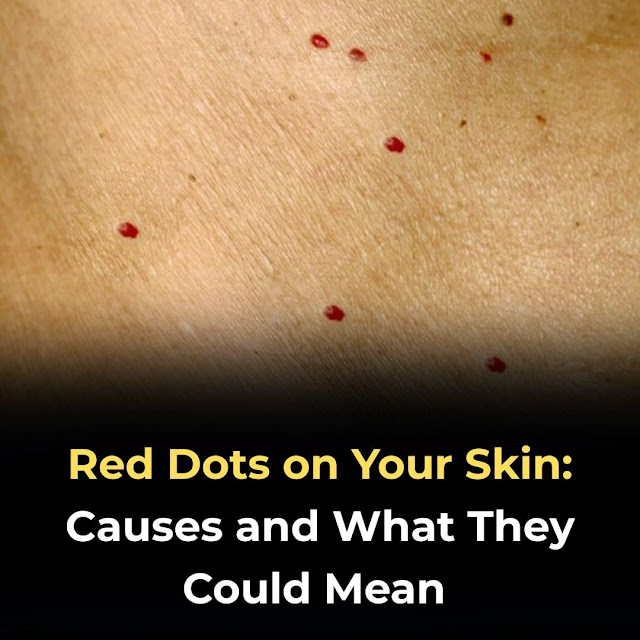Cherry angiomas are small, bright red bumps caused by dilated blood vessels. They’re very common in adults and typically appear on the torso, arms, or legs.
- What to Do: These are usually harmless, but if they grow rapidly or bleed, seek medical advice.
3. Heat Rash (Miliaria)
Heat rash occurs when sweat ducts become blocked, leading to small red bumps or dots, especially in hot, humid weather.
- What to Do: Stay cool, wear breathable fabrics, and avoid heavy lotions. The rash should clear up on its own.
4. Allergic Reactions
Allergies to food, medication, or skincare products can cause red dots or hives, which may itch or burn.
- What to Do: Identify and avoid the allergen. Over-the-counter antihistamines can help relieve symptoms.
5. Keratosis Pilaris: "Chicken Skin"
This condition causes rough, red bumps due to excess keratin buildup in hair follicles. It’s most common on the arms, thighs, and cheeks.
- What to Do: Use gentle exfoliants or moisturizers with lactic acid or urea to smooth the skin.
6. Rosacea
Rosacea is a chronic skin condition that causes redness, flushing, and sometimes small red bumps or dots on the face.
- What to Do: Avoid triggers like sun exposure, stress, and spicy foods. A dermatologist can recommend treatments like topical creams or laser therapy.
7. Insect Bites
Bites from mosquitoes, fleas, or bedbugs can leave behind red dots, often accompanied by itching or swelling.
- What to Do: Apply soothing creams and use insect repellents to prevent future bites.
8. Psoriasis
Psoriasis is an autoimmune condition that causes scaly, red patches or dots on the skin. These areas may feel dry or itchy.
- What to Do: Consult a dermatologist for personalized treatment options, such as topical medications or light therapy.
9. Viral Infections
Certain viral infections, like measles, chickenpox, or hand-foot-mouth disease, can cause red dots or rashes all over the body.
- What to Do: Seek medical attention if you suspect a viral infection, as some require specific treatments.
10. Aging and Sun Damage
As we age, prolonged sun exposure can lead to red dots known as senile purpura or "age spots." These occur when fragile blood vessels break easily.
- What to Do: Protect your skin with sunscreen and consider using retinol-based products to improve skin elasticity.
11. Stress or Anxiety
Emotional stress can trigger flare-ups of conditions like eczema, rosacea, or hives, leading to red dots or patches on the skin.
- What to Do: Practice stress-reducing techniques like meditation, yoga, or deep breathing exercises.
When Should You See a Doctor?
While many red dots are harmless, certain situations warrant professional evaluation:
- The dots suddenly increase in number or size.
- They’re accompanied by pain, fever, or other symptoms.
- You notice unusual bleeding or bruising.
- The red dots persist despite home care.
Early diagnosis and treatment can prevent complications and provide peace of mind.
Final Thoughts
Red dots on your skin can have numerous causes, ranging from benign conditions like cherry angiomas to more serious issues requiring medical attention. By paying attention to your skin and addressing any concerns promptly, you can maintain healthy, glowing skin for years to come.
Have you noticed red dots on your skin? Share your experiences and tips in the comments below! 🌟









.jpg)


